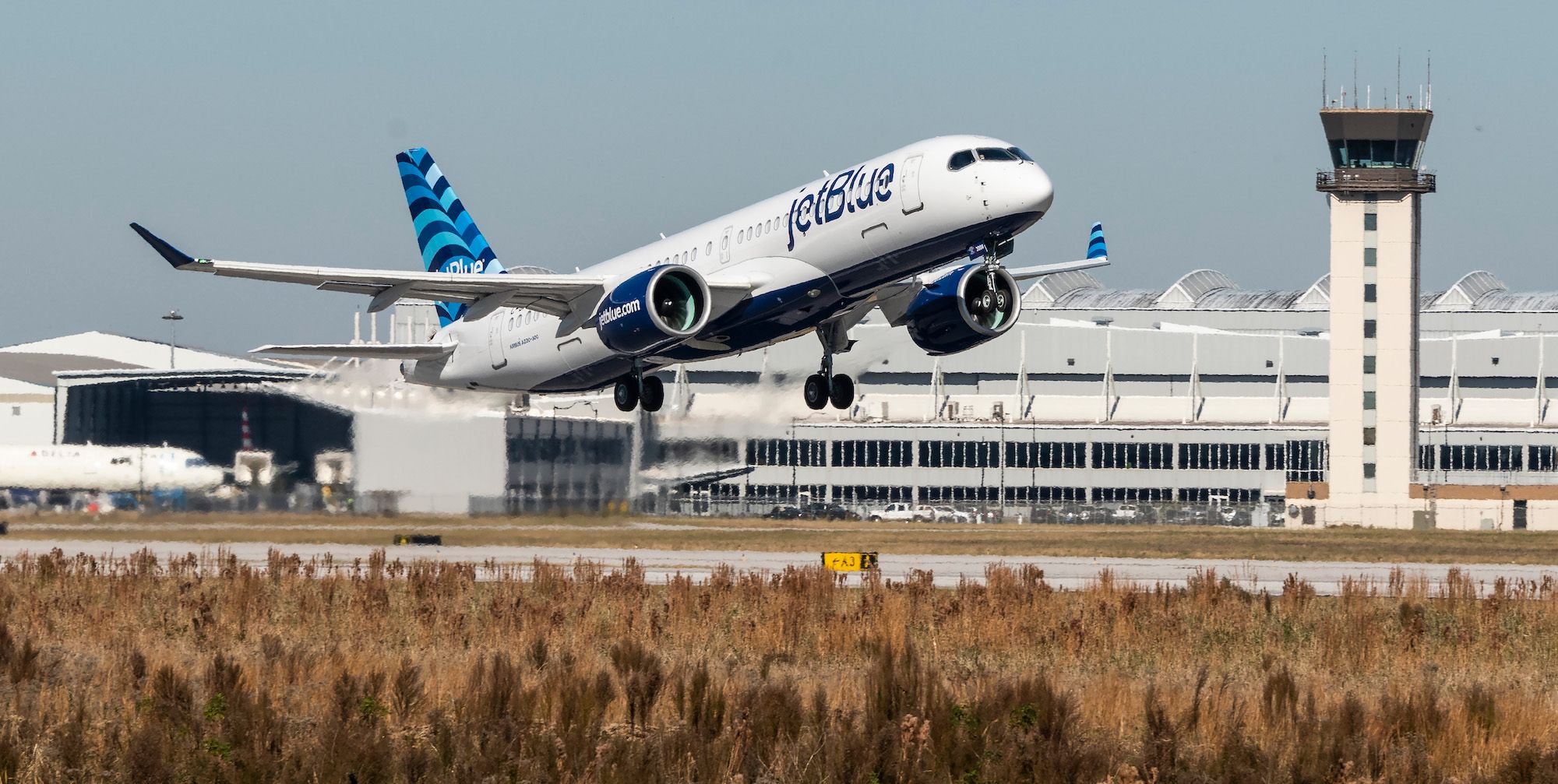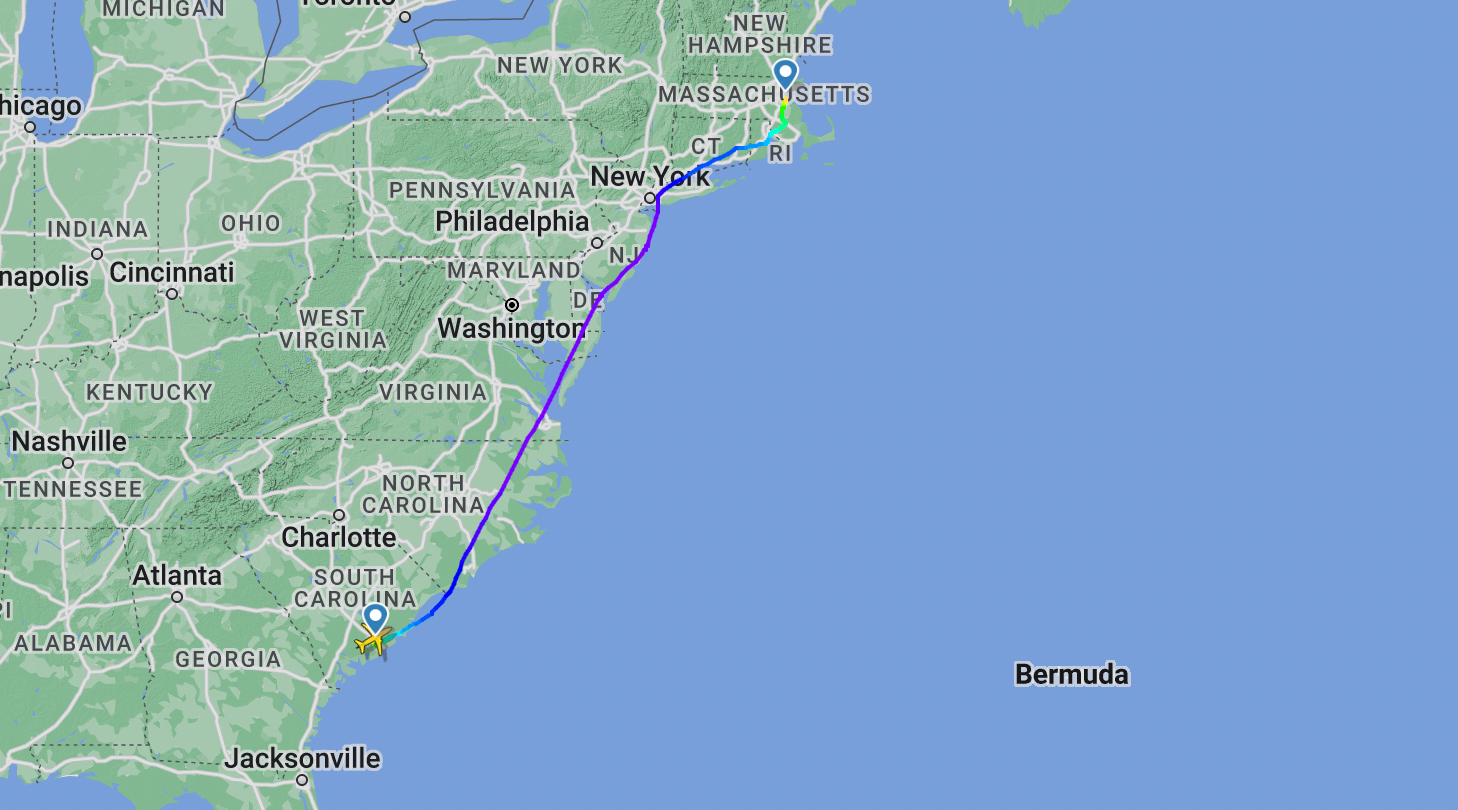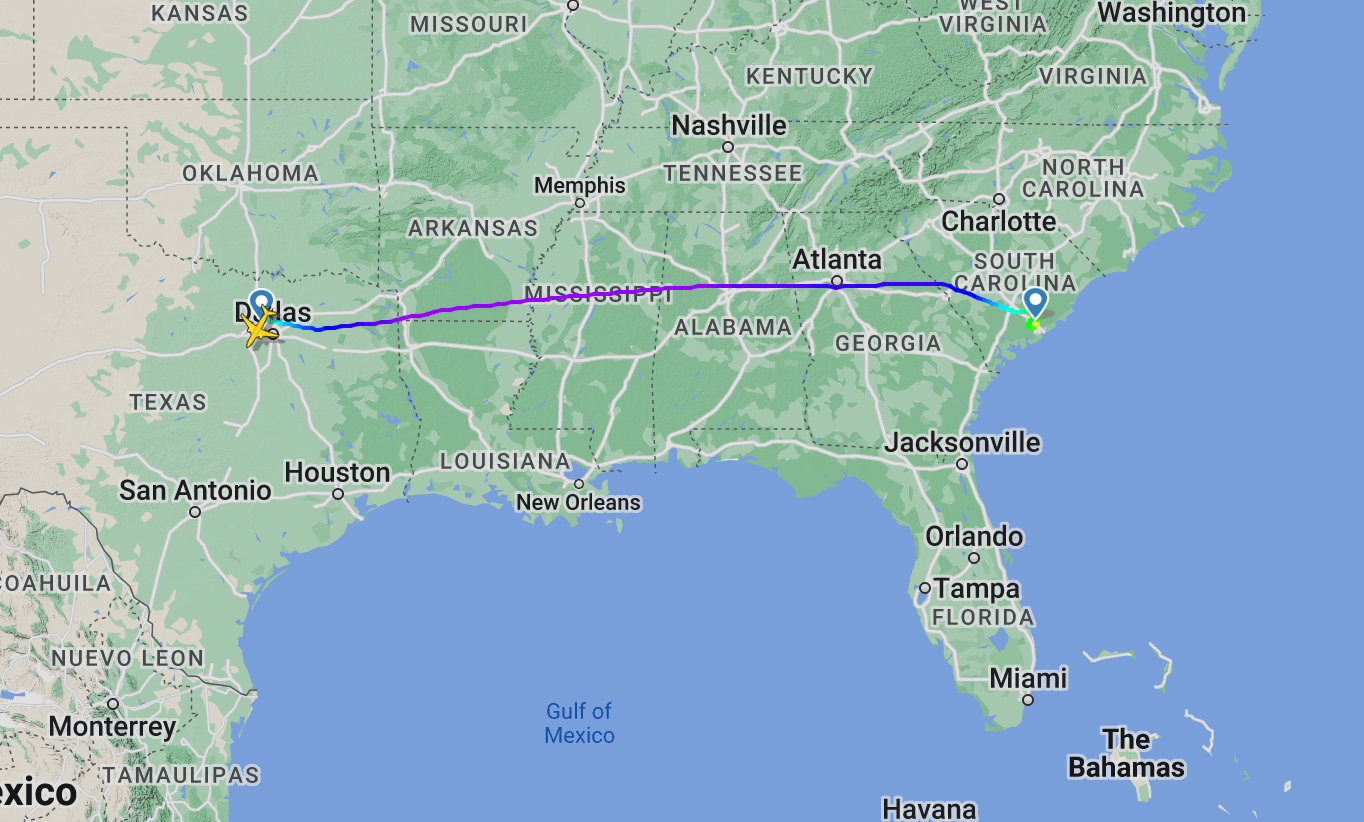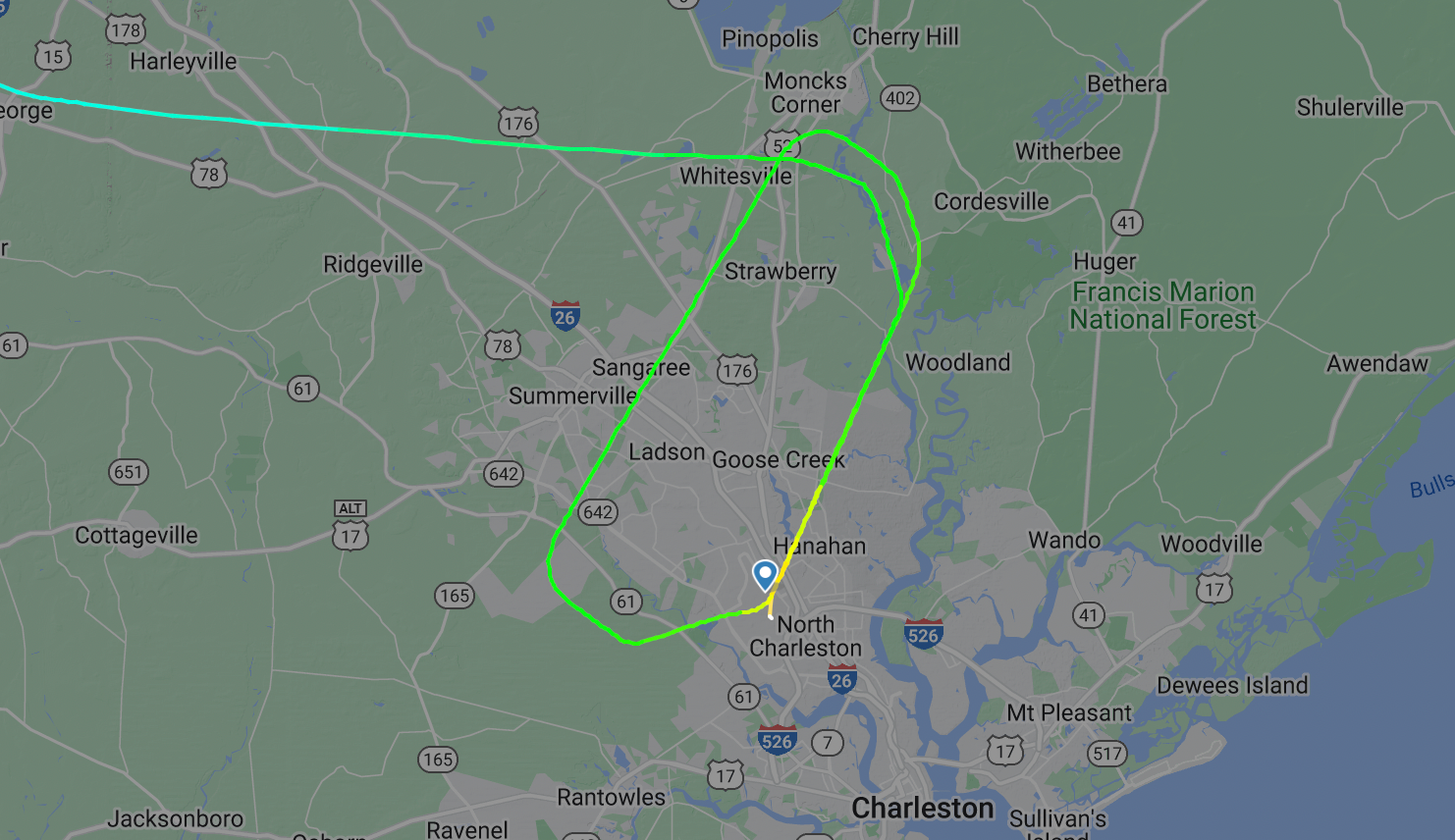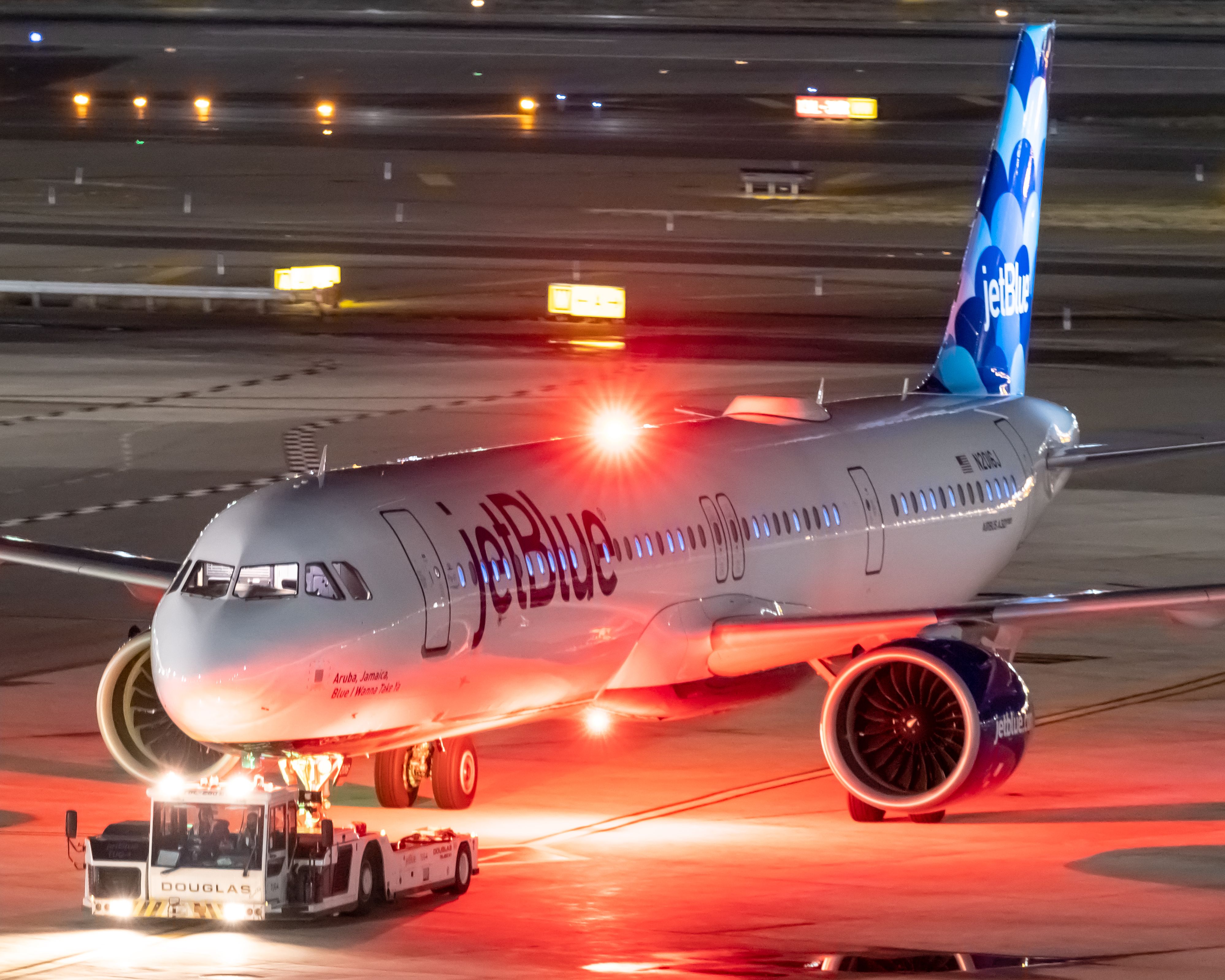On April 30th, a Boeing 737 MAX 8 operated by American Airlines had to perform a go around at Charleston due to a JetBlue Airbus A220-300 still being on the runway it was due to land on. Aborting its landing and circling around while the departing JetBlue aircraft took off, a loss of separation incident occurred.
Setting the scene at Charleston
On Sunday, an Airbus A220-300 operated by JetBlue pushed back from the terminal at Charleston Airport (CHS) at around 14:21. The aircraft, registered N3118J, was set to conduct flight B6-2468 to Boston, and was cleared for takeoff from Charleston's runway 21.
As the aircraft was cleared for takeoff, an American Airlines Boeing 737 MAX 8 registered N335SN was on its final approach, about 2 NM (3.7 km) away. The aircraft was performing flight AA2325 from Dallas Ft. Worth and was due to touch down on runway 21.
Discover more aviation news with Simple Flying.
Aircraft still on the runway
According to The Aviation Herald, the American Airlines flight was on short final approach to runway 21 and had descended through about 700 feet when the JetBlue A220 was spotted on the runway. Immediately, the Boeing 737's crew initiated a go around to avert possible disaster. The aircraft turned right to a heading of 260 degrees, while also climbing up to 3,000 feet.
The Aviation Herald notes that the JetBlue aircraft climbed through the altitude of the Boeing, although horizontal separation between the two jets had reduced to about 0.4 NM (740 meters).
Flight AA2325 circled around and then positioned itself for another approach to runway 21. The 737 landed safely about 15 minutes after the go around while the JetBlue A220 reached Boston without incident.
ATC oversight?
Without any further details provided, it would appear on the surface that the American Airlines Boeing 737 was cleared to land on a runway that was still occupied. This may have been due to an expectation that the JetBlue A220 would have (or should have) taken off earlier than it did. Whatever the case, the circumstances suggest that Charleston ATC failed to recognize that the A220 had not yet taken off while the 737 quickly approached the same runway.
Speculation aside, it has been a worrying start to the year regarding incidents at US airports. In March 2023, the United States Federal Aviation Administration (FAA) felt it necessary to issue a safety alert to airlines and pilots due to the number of near-miss incidents occurring in a relatively short window of time. The new Safety Alert For Operators (SAFO) is titled Aviation Safety Call to Action and discusses how recent events have exposed several areas requiring focus.
As we noted in a previous article, the list of items for flight crew and airport operations personnel to review was published at the end of the SAFO, including things like reviewing information about runway safety and ensuring all crew understand the meaning and importance of a sterile flight deck.
Sources: The Aviation Herald, FlightRadar24.com

